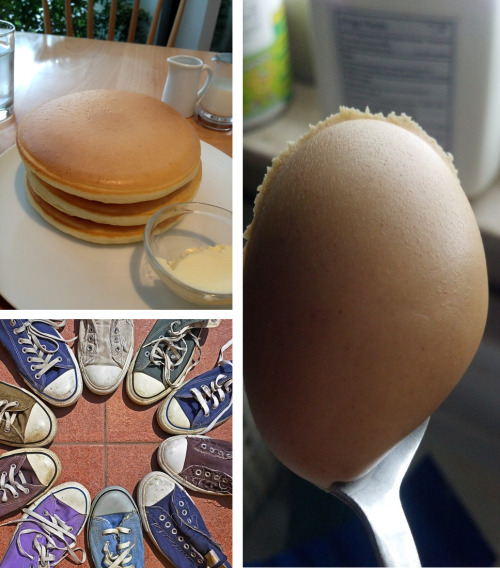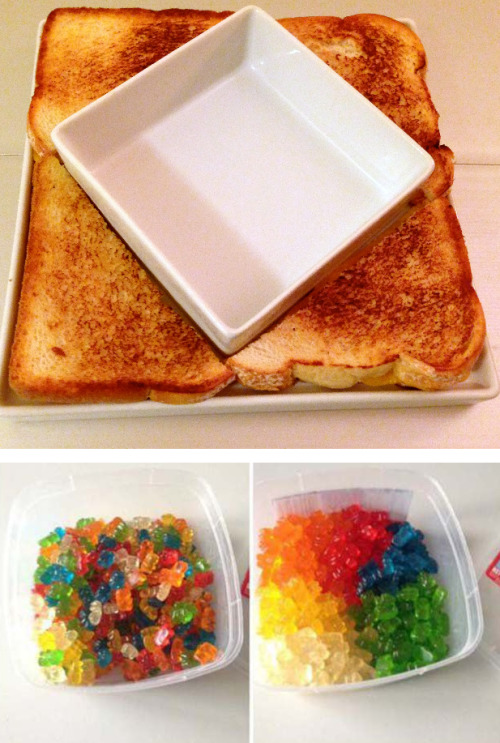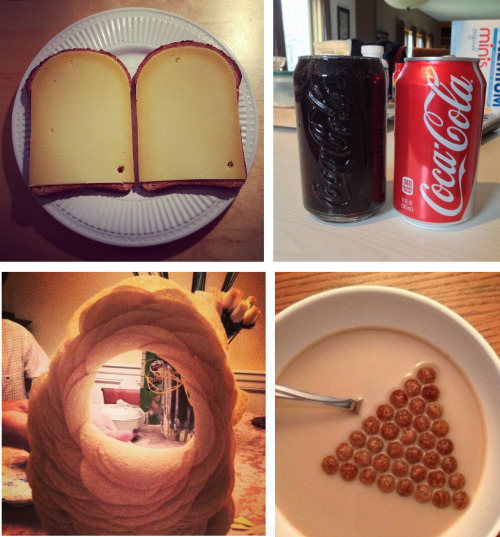I Have A Lot Of Friends Who Are Premeds, So They Definitely Aren't All Bad. That Said, Some Of Them Are
I have a lot of friends who are premeds, so they definitely aren't all bad. That said, some of them are pretty hard to be in class with. Especially the ones who are SUPER competitive - they dominate office hours and take up the instructor's time with questions that are sometimes only relevant to themselves. One of my TAs was complaining about one of the that argued with him for 30 minutes over half a point. There's a point where it goes past acceptable academic competition.
At the risk of being incredibly whiny, what exactly is everyone's beef with med students? D: I just finished my biology degree with pre-med and I guess I was just surrounded by med students because I do not understand
It’s just exhausting to be in a class you enjoy and are taking because you want to do science and be surrounded by students who are constantly complaining about how much they hate it, and don’t need it, and are only taking it because it’s going to be on the MCAT. Certainly not all pre-meds are like that, but even the 10% who constantly ask questions about if they’re going to get an A and look down at the mere science students kind of ruin it when you have to deal with them in every class.
I will say, a large part of the problem isn’t even pre-med students themselves, it’s the fact that biology departments have to bear the burden of the majority of their students being pre-professional in some capacity, who have completely different needs than pre-doctoral students who want to be biologists. Bio programs end up teaching to the MCAT almost out of necessity, which does a disservice to the students who want to be scientists.
I know that at my university, I considered switching to bio from chem, but ended up staying in the science and engineering college because the bio college was so focused on pre-professional students that they did a really poor job preparing you to be an actual scientist. Just based on the classes I took for my biochem minor, it was really obvious. I suspect that this is the case at a lot of schools, which sort of compounds the issues and makes pre-doctoral students frustrated with pre-meds, even though it’s not their fault directly.
More Posts from Secretagentpeptidebond and Others


In this video lichtenburg figures are burned into wood using a microwave oven transformer. The results are spectacular. (Video) Facebook | Instagram | Scary Story Site

Lovely crystallization effect from an extraction the other day

We take for granted that drops which impact a solid surface will splash, but, in fact, drops only splash when the surrounding air pressure is high enough. When the air pressure is low enough, drops simply impact and spread, regardless of the fluid, drop height, or surface roughness. Why this is and what role the surrounding air plays remains unclear. Here researchers visualize the air flow around a droplet impact. In (a) we see the approaching drop and the air it pulls with it. Upon impact in (b) and © the drop spreads and flattens while a crown of air rises in its wake. The drop’s spread initiates a vortex ring that is pinned to the drop’s edge. In later times (d)-(f) the vortex ring detaches from the drop and rolls up. (Photo credit: I. Bischofberger et al.)

Copper essential for burning fat, researchers find
Though small amounts of copper are essential to health - oysters, liver, beans and nuts are good sources - copper’s role in metabolism has been unclear: Some studies found that it boosted fat burning, others that it depressed it.
University of California, Berkeley, Lawrence Berkeley National Laboratory and Howard Hughes Medical Institute researchers have now clarified the critical role that copper plays in nutrition: It helps move fat out of fat cells - called adipocytes - and into the blood stream for use as energy.
Without enough copper, fat builds up in fat cells without being utilized, said Christopher Chang, the Class of 1942 Chair and a professor of chemistry and of molecular and cell biology at UC Berkeley.
“Unlike other studies that link copper levels both to increased or decreased fat metabolism, our study shows definitively how it works - it’s a signal that turns on fat cells,” said Chang, who also is a faculty scientist at Berkeley Lab and a Howard Hughes Medical Institute investigator. “If we could find a way to burn fat more efficiently, this could be a big contribution to dealing with obesity and diabetes.”
The new study appeared online this week, and will be published in the July print issue of the journal Nature Chemical Biology.
“Copper regulates cyclic-AMP-dependent lipolysis” by Lakshmi Krishnamoorthy, Joseph A Cotruvo Jr, Jefferson Chan, Harini Kaluarachchi, Abigael Muchenditsi, Venkata S Pendyala, Shang Jia, Allegra T Aron, Cheri M Ackerman, Mark N Vander Wal, Timothy Guan, Lukas P Smaga, Samouil L Farhi, Elizabeth J New, Svetlana Lutsenko and Christopher J Chang in Nature Chemical Biology. Published online June 6 2016 doi:10.1038/nchembio.2098
Caption: The crystal structure of the cAMP-degrading enzyme phosphodiesterase PDE3B, showing two magnesium atoms (green) in the active site. Copper binds one of the amino acid residues in the pink loop at the left, blocking the activity of the enzyme. Credit: Lakshmipriya Krishnamoorthy and Joseph Cotruvo Jr., UC Berkeley

The ballrooms of the Westin St. Francis hotel were packed with rows of men in blue and gray suits. Outside the hotel, where attendees gather for coffee, was about the same -- of 47 people sitting on one side of the square outside the conference hotel, two were women. Of those, one was in media relations. There was no line for the women’s bathroom.
LifeSci’s McDonald says it’s just reality that the industry and its investors skew male. That’s why he hired the models.
“When you think about going to a party, when you don’t have any models, it’s going to be 90/10, or even greater, male-to-female,” he said. “Adding in some females changes the dynamic quite a bit.”

(https://iep.utm.edu/art-emot/)

it he @ultrainfinitepit
-
 freshprogressgeek liked this · 6 years ago
freshprogressgeek liked this · 6 years ago -
 believercountzero liked this · 6 years ago
believercountzero liked this · 6 years ago -
 retrogekko liked this · 8 years ago
retrogekko liked this · 8 years ago -
 retrogekko reblogged this · 8 years ago
retrogekko reblogged this · 8 years ago -
 deepspacepirate liked this · 8 years ago
deepspacepirate liked this · 8 years ago -
 bookworm20x liked this · 8 years ago
bookworm20x liked this · 8 years ago -
 wuzzymolecules liked this · 8 years ago
wuzzymolecules liked this · 8 years ago -
 serotonesque reblogged this · 8 years ago
serotonesque reblogged this · 8 years ago -
 serotonesque liked this · 8 years ago
serotonesque liked this · 8 years ago -
 inchoatewaffle reblogged this · 8 years ago
inchoatewaffle reblogged this · 8 years ago -
 inchoatewaffle liked this · 8 years ago
inchoatewaffle liked this · 8 years ago -
 kat6496-blog liked this · 8 years ago
kat6496-blog liked this · 8 years ago -
 theneatestthing7 liked this · 8 years ago
theneatestthing7 liked this · 8 years ago -
 auroramere liked this · 8 years ago
auroramere liked this · 8 years ago -
 nanobiot-topo-blog reblogged this · 8 years ago
nanobiot-topo-blog reblogged this · 8 years ago -
 pinus-ponderosa reblogged this · 8 years ago
pinus-ponderosa reblogged this · 8 years ago -
 jaredinthestars liked this · 8 years ago
jaredinthestars liked this · 8 years ago -
 beyondthemultiverse liked this · 8 years ago
beyondthemultiverse liked this · 8 years ago -
 drabblegeek liked this · 8 years ago
drabblegeek liked this · 8 years ago -
 politeelephant liked this · 8 years ago
politeelephant liked this · 8 years ago -
 totallystandoffish liked this · 9 years ago
totallystandoffish liked this · 9 years ago -
 tzarfuckitlordofprocrastina-blog liked this · 9 years ago
tzarfuckitlordofprocrastina-blog liked this · 9 years ago -
 singinghistorian liked this · 9 years ago
singinghistorian liked this · 9 years ago -
 amberstudies reblogged this · 9 years ago
amberstudies reblogged this · 9 years ago -
 mothmanmaybe reblogged this · 9 years ago
mothmanmaybe reblogged this · 9 years ago -
 chibisatou liked this · 9 years ago
chibisatou liked this · 9 years ago -
 dosajam liked this · 9 years ago
dosajam liked this · 9 years ago -
 sciencemouse reblogged this · 9 years ago
sciencemouse reblogged this · 9 years ago -
 sciencemouse liked this · 9 years ago
sciencemouse liked this · 9 years ago -
 theshiningbeacon liked this · 9 years ago
theshiningbeacon liked this · 9 years ago -
 bombushuntii reblogged this · 9 years ago
bombushuntii reblogged this · 9 years ago -
 parting-is-such-sweet-sorrow reblogged this · 9 years ago
parting-is-such-sweet-sorrow reblogged this · 9 years ago -
 liebebee reblogged this · 9 years ago
liebebee reblogged this · 9 years ago -
 amaraarzu liked this · 9 years ago
amaraarzu liked this · 9 years ago -
 studyneuro reblogged this · 9 years ago
studyneuro reblogged this · 9 years ago -
 gelunnucifera reblogged this · 9 years ago
gelunnucifera reblogged this · 9 years ago -
 roguedefender22 reblogged this · 9 years ago
roguedefender22 reblogged this · 9 years ago -
 reachyourlimit reblogged this · 9 years ago
reachyourlimit reblogged this · 9 years ago












